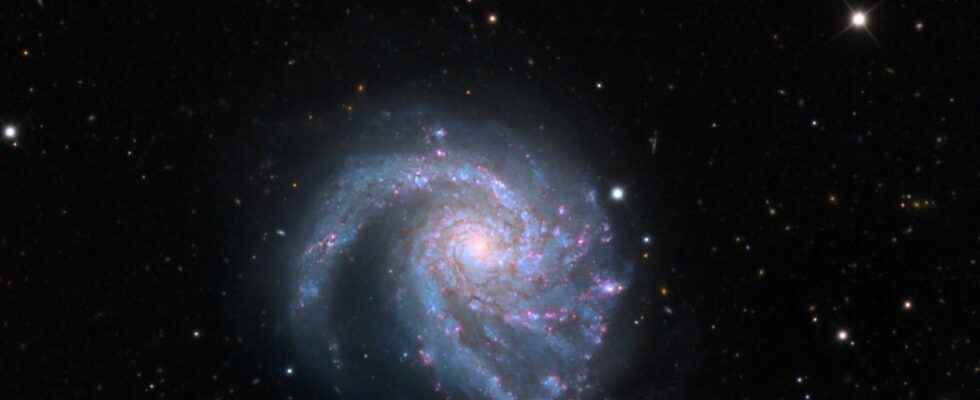The astrophysicists working on the enigma of the black matter are looking for dwarf galaxies containing dark matter but which are probably very faint to have escaped earlier detection. the standard cosmological model predicts the existence of a large number of these galaxies dwarfs around large galaxies such as Milky Way.
It is possible to hunt these dwarf galaxies, and more generally faint galaxies close to our Galaxy using radio telescopes like those of the network of Very Large Array in New Mexico (USA). Technically speaking, it is a question of studying the radiation radio of clouds of gasfor example via the famous line 21 cm from hydrogen. Several promising gas clouds that could be associated with faint dwarf galaxies have thus been discovered by the group ofastronomers led by Elizabeth Adams of the Netherlands Institute for Radio Astronomy.
These gas clouds were thought to be associated with the Milky Way and most of them probably are. But when teams — with researchers like David Sand, associate professor of astronomy at UArizona, or Michael Jones, postdoctoral researcher at theUArizona Steward Observatory and main author of an article about these clouds and deposited in free access on arXiv — wanted to look for stars associated with them and dwarf galaxies, they had surprises.
Thus, an unprecedented association of young blue stars forming a group called SECCO1 and observed with telescope Hubble actually happened to be in thecluster of galaxies of the Virgin. Located at an estimated distance between 48 to 72 millionlight yearsit was discovered by the famous French astronomer Charles Messier (1730-1817) renowned for having created the famous catalog of deep sky objects bearing his name.
Two hypotheses for the origin of the mysterious “blue blobs”
Other observations made with Hubble and the instruments of the VLT of Eso in Chile have revealed the existence of ” blobs similar blueprints with never-before-seen features. Thus, most of the stars in each system are very blue and very young, rich in heavy elements that astrophysicists call metals which are, in fact, simply nuclei other than those of thehydrogenI’helium and their isotopesall bathed in clouds that contain very little atomic hydrogen forming well at the end of the structures the size of a dwarf galaxy.
The article on arXiv reports five blue “blobs” that are distant from the Milky Way and distant galaxies in the cluster of Virgowith which they are potentially associated, from a distance of up to 300,000 light-years.
The presence almost exclusively of blue stars, therefore young, with no yellow dwarf Where red dwarf really detectable, indicates that the star formation is recent. However, the presence of many metals indicates that the gas from which these stars were formed must have been in a large and ancient galaxy which had time to evolve chemically with several generations of stars carrying out nucleosynthesis stellar and ending their lives in supernovae, thus ejecting the products of this nucleosynthesis into the galaxies. We should therefore see, as in the Milky Way, red dwarfs and yellows in abundance.
To resolve this paradox, two theories can be invoked, all of which involve masses gas ejected from a large galaxy. The first assumes the effect of tidal forces exerted by a large galaxy on another, forces which would therefore have torn off gas. The other theory involves a galaxy rapidly colliding with a mass of hot plasma in the galaxy cluster. It can be shown that the shock produces a pressure able to quickly tear a mass of gas from the galaxy. We then speak of an effect called stripping by dynamic pressure (ram pressure stripping in English).
The researchers lean more towards the second hypothesis because, in order to obtain blobs despite everything that are very isolated from the surrounding galaxies, they must move quickly, which is not compatible with the hypothesis of the mechanism with tidal forces.
Interested in what you just read?
